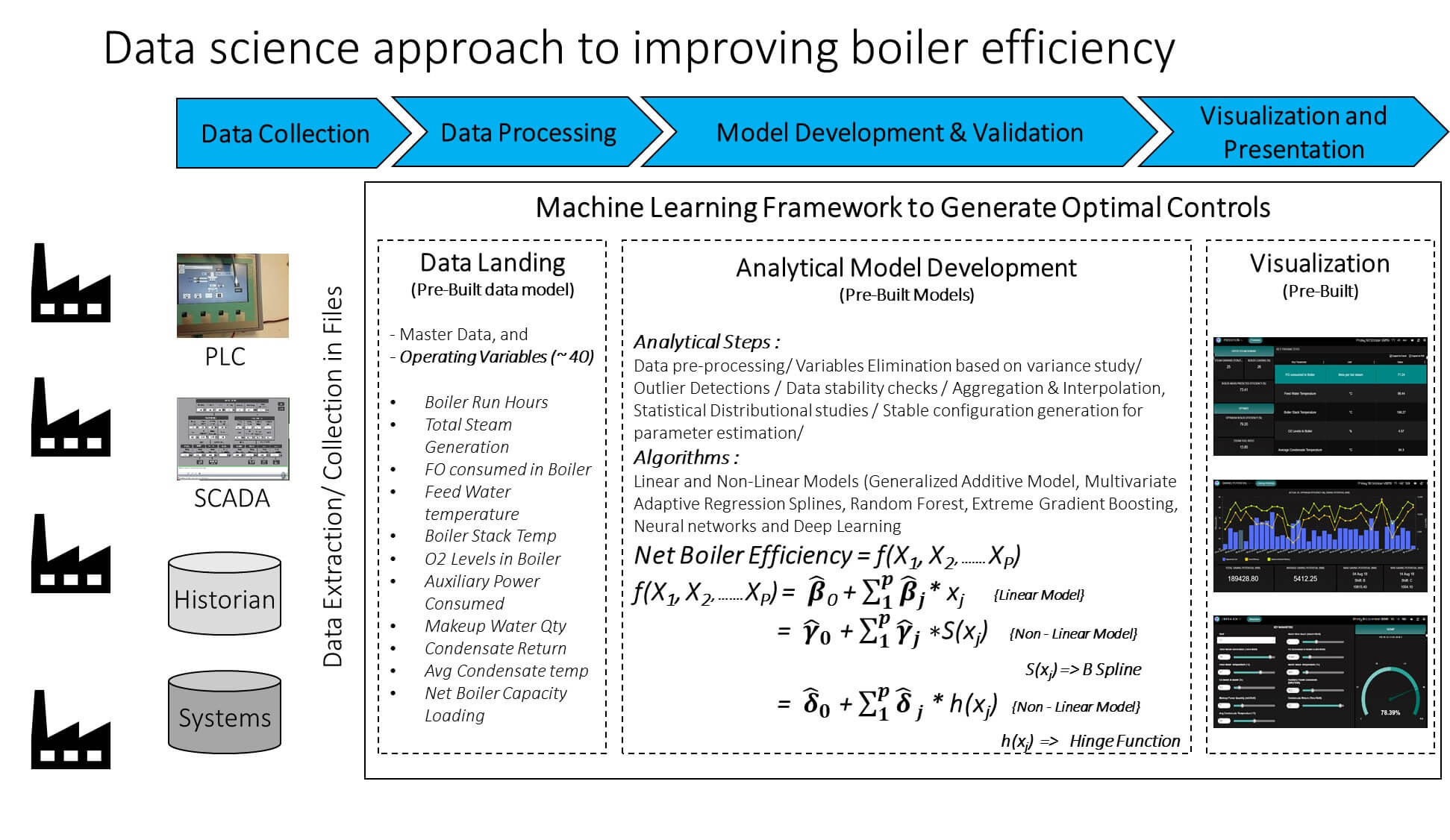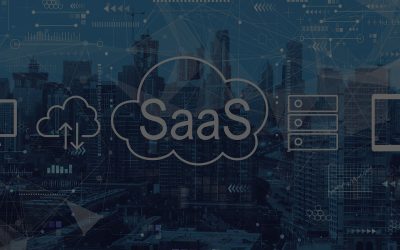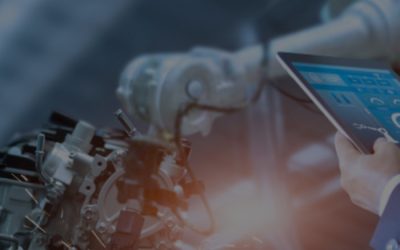Optimization of Industrial Asset Performance & Operational Cost through simulated control using Machine Learning algorithms
“It is not the strongest of the species that survives, not the most intelligent.
It is the one that is most adaptable to change” – Charles Darwin
It is said that with time evolution is inevitable. Change is inevitable. Darwinism is inevitable.
Mankind has always achieved excellence by a constant iteration of methods to do the same work given any field.
The basic philosophy behind iteration is to converge towards perfection through a constant change of ideas and methodology over time.
In the past few decades we have seen industries achieving marvelous breakthroughs, setting trends and making room for new ideas that would later change the way we do things.
Today, let’s look at the manufacturing industry and how technologies like artificial intelligence and machine learning are shaping the future to Industry 4.0. Imagine a manufacturing unit that produces 3 types of processed consumer goods using multiple assets and machine equipment required for the production process on the factory floor. Most manufacturers want to optimize their production costs by efficiently utilizing the assets, improving their reliability and efficiency. Let’s assume that one of the assets is 40% of annual production cost and if its performance and efficiency is not optimal then a major portion of your cost is consumed diagonally by the poor performance of an asset.
Moreover, the problem doesn’t end here, imagine asset managers and operators are only trained to analyze the endogenous factors that affect the system and manually operate them based on their own gut decisions which is not enough. It’s a limitation that is being bridged through experience and conventional R&D. Exogenous factors are equally important as the production lines won’t be completely isolated from the exogenous factors.
With emerging technologies like AI/ML and Data Science taking a center stage, manufacturing industry has been adopting it for different use cases like predictive asset maintenance, asset performance optimization and augmenting human decision making for plant managers, operators and production managers. Let’s look at how AI/ML can be used to help manufacturers optimize the production cost. We adopted a holistic approach and focused on the following three areas:
- Prediction and Optimization of Asset Performance based on exogenous and endogenous factors.
- Simulation based operator assistance by using Machine Learning.
- Comparative Analysis using Retrospective Data and Error Log Module.
We started off by analyzing the systems data both exogenous and endogenous factors and discovered a varied performance of the asset under various conditions and various timeframes and realized that the asset was underutilized. On further analysis, we discovered a scope for optimizing the performance by predicting the efficiency and using it as a tertiary input to optimize the controls that would in turn help achieve desired level of output.
We built a Machine Learning solution that could be utilized repeatedly over a fixed period and becomes a natural part of the process. We adopted all the safety regulations and process guidelines. We started off with simple Machine Learning solutions like Linear Regression and slowly moved on to final model i.e. Random Forest by a set of continuous trials based on our prior expertise in this field.
 The manufacturing unit operated for 3 shifts in a day with each shift running for 8 hours and after analyzing the data, we found that even though the performance in each shift was almost the same but there was a slight discrepancy. So, to understand it better, we used Unsupervised Machine Learning Algorithm that detected the hidden performance pattern. We divided the entire year’s data into 4 principle clusters, each one with its unique centroid positions across the parametric space. We then incorporated this information in the Data Science Engine and generated a series of Machine Learning Models – Multiple Linear Regression, Generalized Additive Model and Random Forest – with exceeding performance. The Random Forest outperformed all the others with the help of the unsupervised model at the backend and at the same time none of the predictions were exceeding beyond the design specifications of the asset, so we selected it as the prediction algorithm.
The manufacturing unit operated for 3 shifts in a day with each shift running for 8 hours and after analyzing the data, we found that even though the performance in each shift was almost the same but there was a slight discrepancy. So, to understand it better, we used Unsupervised Machine Learning Algorithm that detected the hidden performance pattern. We divided the entire year’s data into 4 principle clusters, each one with its unique centroid positions across the parametric space. We then incorporated this information in the Data Science Engine and generated a series of Machine Learning Models – Multiple Linear Regression, Generalized Additive Model and Random Forest – with exceeding performance. The Random Forest outperformed all the others with the help of the unsupervised model at the backend and at the same time none of the predictions were exceeding beyond the design specifications of the asset, so we selected it as the prediction algorithm.
|
Models Applied |
MAPE |
RMSE |
MAD |
|
Multiple Linear Regression |
2.9 |
1.9 |
1.97 |
|
Generalized Additive Model |
2.05 |
1.36 |
2.161 |
|
Random Forest – Unsupervised Learning |
5.4 |
4.9 |
3.42 |
|
Random Forest – Without Unsupervised Learning |
5.6 |
5.06 |
3.56 |
Post Prediction, we took a step forward and formulated an optimization problem that minimized the sum of the squares of the error from the above mentioned model and in turn produce control limits for the other production unit that would enhance the process to assist the asset to reach the desired level of output. We achieved this using an evolutionary algorithm, Genetic Algorithm which is a metaheuristic inspired by the process of natural selection that belongs to a larger class of evolutionary algorithm. Genetic Algorithms are used to generate high quality solutions to optimization and search problems by relaying on biologically inspired operations such as mutation, crossover and selection.
But we discovered that we cannot solve the problem by simply optimizing the controls, as easy as it seems in real life most of the control systems are analog in nature and you cannot fine tune them to an accurate decimal degree. So, in order to solve this problem, we decided to augment the floor manager’s decision making regarding the optimization. We developed a Machine Learning Algorithm to simulate the efficiency based on the desired level of the controls that the operator desires to operate in a given shift. This Machine Learning algorithm helped the operators to simulate scenarios and possibilities of the various control points in the chain and enable decision making. This augmented decision making enables the stakeholder to improve the asset efficiency over time. This evolution of operation assistance will enable us to get a deeper insight about the true capability of the asset.
Our solution has a potential to drop the portion of the production cost from 40% to 30%, that is, we had the potential to save at least 10% of the portion over a span of 12 months. The third component of the solution enables you to understand the retrospective behavior of the asset along with scope to increase the accuracy of the models at the backend by providing the end user with a log that will allow him/her to log errors/production efficiencies that happen over time on the production line. This error log at the backend enables the machine learning models to iteratively incorporate them in the solution and increase its accuracy over time. It also helps the stakeholders at the management and production line to identify key insights into the chronic issues on a regular basis to investigate any kind of malfunction that repeatedly affects the production line.
Before we wrap up this short story about the advent of the new age solution using Data Science let me give you a snapshot of our solution.
 Do get in touch with us to know more on how we can help you optimize the production costs and improve the operational equipment efficiency using data science.
Do get in touch with us to know more on how we can help you optimize the production costs and improve the operational equipment efficiency using data science.
Indranil Seal
Data Scientist, DX, ITC Infotech
Indranil.Seal@itcinfotech.com
Advisors:
Anindya Neogi
GM, Chief Data Scientist, DX, ITC Infotech
Anindya.Neogi@itcinfotech.com
Umashankar SM
Senior Principal Consultant, BCG, ITC Infotech
Umashankar.SM@itcinfotech.com
Nishant Jain
Associate Consultant, BCG, ITC Infotech
Nishant.Jain@itcinfotech.com
Author:
Indranil Seal
Data Scientist, DX, ITC Infotech











